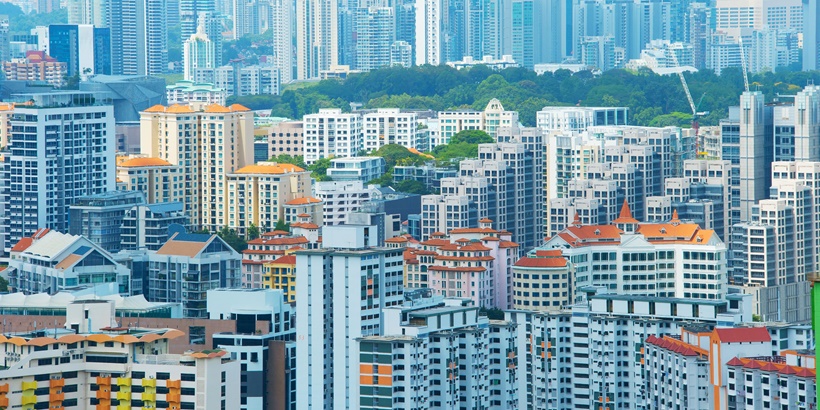
Work from home arrangements has seen demand for larger units go up and home buyers being more willing to buy properties in OCR neighbourhoods.
The rise of the work from home trend due to the COVID-19 pandemic saw Singapore buyers opting for larger homes, allowing them to set up dedicated workspaces or makeshift offices segregated from personal spaces.
In fact, sales of large homes now hover at almost a 10-year high, said Christine Sun, Senior Vice President of Research and Analytics at OrangeTee and Tie, in an article posted in Channel News Asia (CNA).
URA Realis data showed that sales of large condominiums measuring at least 1,200 sq ft surged 205.5% to 4,335 units (including subsales) during the first half of 2021 from 1,419 units over the same period last year.
The figure surpassed the 2,056 units shifted over the same period in 2019 before the pandemic, and the 3,786 units transacted in the same period in 2018 prior to the introduction of cooling measures.
The increased demand for bigger units was evident across all market segments.
Related article: Read Online: Singapore Property Market Index Q3 2021
Sales of large condominium units of at least 1,200 sq ft within the Outside Central Region (OCR) soared over four times from 211 units in Q2 2020 to 1,007 units over the same period this year. The Rest of Central Region (RCR) saw sales for similar units surge by five times to 650 units, while sales in the Core Central Region (CCR) jumped by almost six times to 616 units in the same period.
Comparatively, sales for smaller units modestly increased over the same period. The OCR saw sales for smaller units increase 2.4 times to 2,149 units. Similar sales in the RCR also grew 2.4 times to 1,658 units and over 3.5 times to 1,039 units in the CCR.
Prices of big condominiums increased the steepest, with some buyers seizing the opportunity to purchase larger homes in anticipation of further prices hikes in the future.
In the past seven years, the median price of big resale condominiums over 1,200 sq ft increased between 14.9% and 21.2% from H1 2014 to H1 2021 – a stark contrast from smaller units below 800 sq ft which posted a 2% to 9.2% decline.
With this, more buyers have been looking to the suburban areas, where larger resale homes may be more affordable.
In H1 2021, about 50% of non-landed resale transactions were in the OCR, an improvement from 45.9% in 2019 and 41.7% in 2017.
Over half of the top 10 resale condominium hotspots during the period were in the suburban regions, with District 19 (Hougang, Punggol, Serangoon Gardens) topping the list.
District 23 (Hillview, Dairy Farm, Bukit Panjang, Choa Chu Kang) claimed fourth place, followed by District 18 (Tampines, Pasir Ris) at fifth spot. District 14 (Geylang, Eunos) settled in seventh place, while District 16 (Bedok, Upper East Coast, Eastwood, Kew Drive) took the eighth spot.
“These rankings were vastly different from seven years ago when prime locations like Districts 9, 10 and 11 were in the top 10, with District 10 in the top spot and District 9 in third place,” said Sun.
“This significant shift in demand for resale homes from prime locations to the suburban and city fringe areas over the years will likely come into sharper focus as employees navigate hybrid working arrangements.”
She noted that people might no longer mind “staying further away from the city centre” where their offices are located.
“Neighbourhood amenities and satellite offices in the suburban areas may suffice, after the Government plans to transform specific non-matures estates and make them more liveable,” she said, adding that this may also explain why more buyers are willing to pay more for homes in Pasir Ris or Punggol.
And with Singapore drawing a road map to working and living with COVID-19 in an endemic state, Sun said the trends of bigger, suburban housing reflect the expectations of Singaporeans that some form of remote work would continue for many.
“It may even become a longer-term norm for those in sectors like banking, finance, accounting, or information and technology where technological advancement has eased the transition with minimum disruption,” she said.
“This group of professional workers with better job stability and purchasing power may continue to drive demand and prices, and keep Singapore’s residential property market in good health.”
Looking for a property in Singapore? Visit PropertyGuru’s Listings, Project Reviews and Guides.
Cheryl Chiew, Digital Content Specialist at PropertyGuru, edited this story. To contact her about this story, email: cheryl@propertyguru.com.sg.


